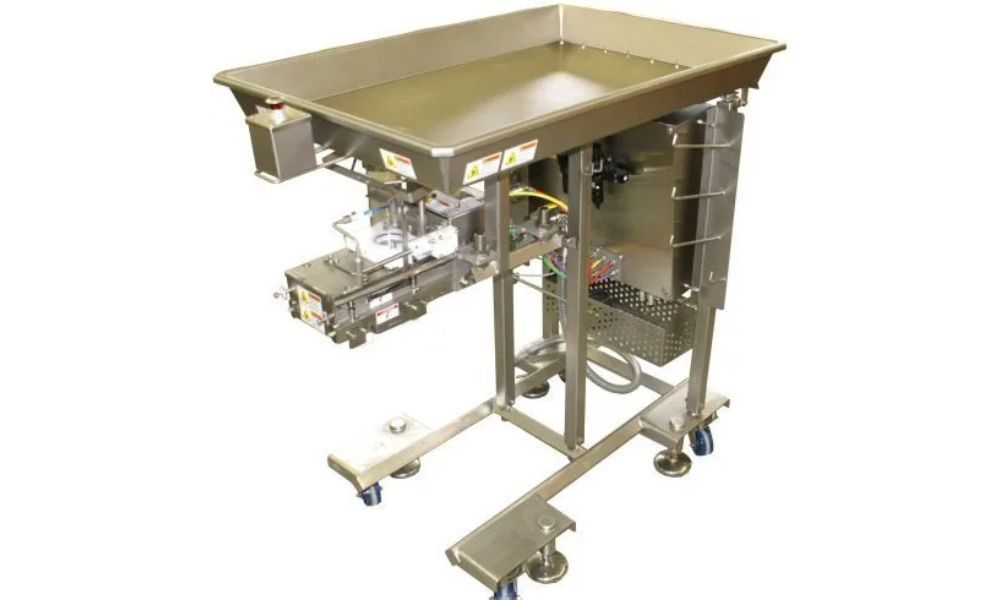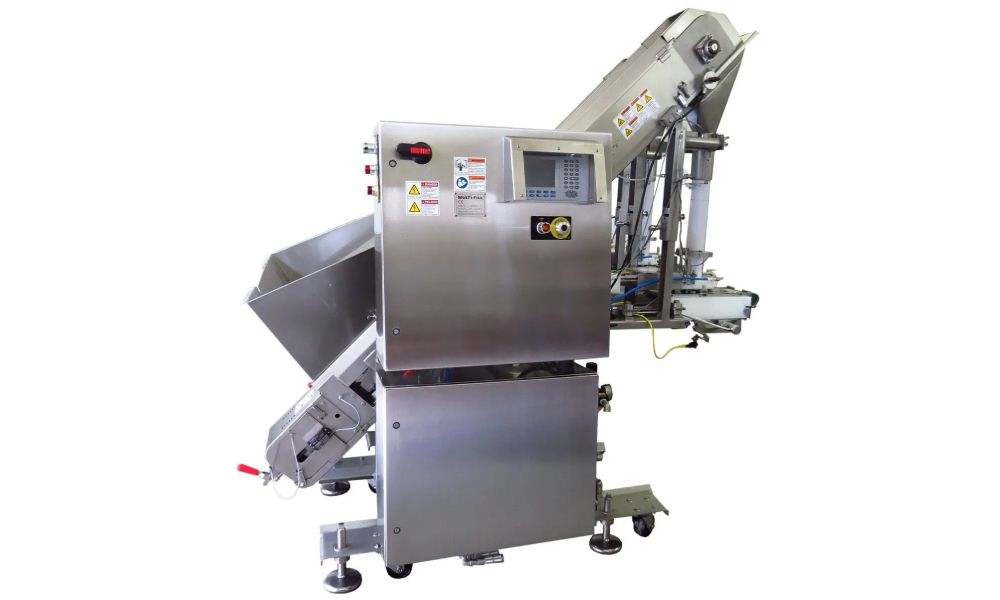Difference Between Volumetric and Liquid Filling Machine
Did you know sticky rice was the reason we started manufacturing volumetric filling machines? And more than thirty years later, several fillers sold in the 1980s are still in operation today. Multi-Fill might be specialists in volumetric fillers, but we can work with all types of machines. Our fillers are designed to be plug and play and integrate well into virtually all existing lines.
There are many types of filling machines, including powder filling machines, granule filling machines, capsule filling machines, and gel filling machines. But today, we share more about the difference between volumetric and liquid filling machines.
What is a Volumetric Filling Machine?
So, what is a volumetric filling machine? These volumetric fillers fill containers with the same amount of product, no matter the shape or size of the container. Have you bought pasta in a bowl and a deli-style Greek salad, and on the label, it shows both are the same weight? Then when you open the containers, one seems fuller than the other? No, you did not get less food, the volume is the same although it might look different.
There are three types of volumetric filling machines:
Gravity fillers. Holds the product in a tank above the filling nozzles and uses gravity to assist in the filling process.
Piston fillers.
Pistons are used instead of pumps to push the product into the waiting containers.
Pump fillers.
Different kinds of pumps that match the liquid product are used. If the liquids are thicker, the system gives a push to get them into the container.
Multi-Fill volumetric fillers can dispense various hard-to-fill products into virtually any container on the market. The units are compact and can be integrated into existing horizontal or vertical conveying lines. The machines are easy to use and clean, as our machines are manufactured with quick-release mechanisms. Visit one of our pilot plants to see our machines in operation, including the following models.
MPFMP-060
Suited for lower speed production lines, pilot plant operations, research, and development laboratories. The product is loaded into the top pan and manually fed into the filling tube by an operator. It fills up to 50 – 60 containers per minute.
MPFSH-075
It is suitable for lower speeds, looser products, and smaller fill weights and is recommended for applications where more automatic product feeding is needed. The model can be upgraded to a MPFSC-120 for increased speed and/or different products when required. It fills up to 60 – 75 containers per minute.
What Is A Liquid Filling Machine?
While volumetric filling machines fill the same volume of product into every container, liquid filling machines are designed to fill containers up to a specified level. Next time you are in the grocery store, notice how all the juice in the bottles ends at the same level. Liquid filling machines are not only made for bottle filling but also for cartons, cans, and cups. The most general types of liquid filling machines are:
- Manual liquid filling machine
- Semi-automatic liquid filling machine
- Automatic liquid filling machine
- Inline liquid filling machine
- Rotary liquid filling machine
- Piston liquid filling machine.
Difference Between Volumetric and Liquid Filling Machine
As we now know, although a volumetric filler and a liquid filler have the same purpose, filling containers with products, there are some differences.
| Volumetric filler | Liquid filler |
|---|---|
| Fills each container with the same volume of product. | Fills the container up to a specified level. |
| Manufactured to handle cooked pasta; cooked, dry, or individually quick frozen rice; frozen, cooked, and raw cut vegetables; deli-style salads and more. | Manufactured to handle liquids such as carbonated drinks, water, soup, salad dressing, cooking oil, food sauces, liquid soap, and cosmetics. |
| Works best with opaque containers. | Perfect for clear containers visible to customers. |
Multi-Fill is based in the city of West Jordan, Utah, United States of America, but we are represented in more than twenty countries worldwide. We are a member of The Association for Packaging and Processing Technologies (PMMI) and the Manufacturers’ Agents National Association (MANA). Do you need volumetric filling machines? Contact Multi-Fill today.
Designing a food filling line: Product is king












